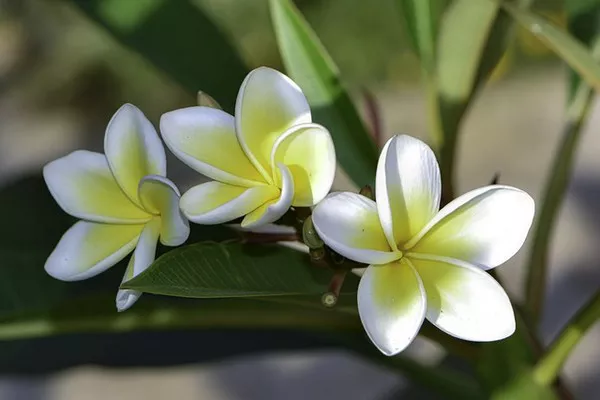Receiving a beautiful bouquet of fresh flowers is a delightful experience, and the sight and fragrance of the blooms can brighten up any room. However, the ephemeral nature of fresh flowers means that their beauty is fleeting. Thankfully, there are several techniques and methods you can employ to extend the life and preserve the beauty of your flower bouquet. In this comprehensive guide, we will explore various preservation methods, both traditional and contemporary, to help you enjoy your flowers for as long as possible.
Understanding the Lifespan of Fresh Flowers
Before diving into the preservation techniques, it’s essential to understand the natural lifespan of fresh flowers. Typically, cut flowers have a limited life expectancy, which can vary depending on factors such as the type of flower, environmental conditions, and how they are cared for. On average, most cut flowers last between 7 to 14 days. By preserving them, you can extend their beauty beyond this typical timeframe.
Traditional Preservation Methods
1. Drying
Drying flowers is one of the oldest and most popular methods of flower preservation. It’s relatively simple and can be done using various techniques. Air drying is the most common method, where flowers are hung upside down in a dark, well-ventilated area until they are completely dry. Another approach is to use desiccants, such as silica gel or sand, which can speed up the drying process and maintain the flower’s shape.
2. Pressing
Pressing flowers is another traditional method of preservation that can be used to create beautiful, flat arrangements. To press flowers, place them between the pages of a heavy book or use a flower press. Gently apply pressure and leave them undisturbed for several weeks. Once the flowers are dried and flattened, you can use them for various crafts or frame them as wall art.
3. Waxing
Waxing is a method that preserves the three-dimensional shape and color of your flowers. To wax flowers, melt paraffin wax or beeswax, and then dip or brush it onto the petals. The wax acts as a protective layer, preventing the flowers from wilting or losing their color. It’s essential to handle the waxing process with care and ensure the flowers are dry before waxing to avoid mold growth.
4. Bouquet Preservation
If you want to preserve your entire flower bouquet with its original shape and arrangement, you can consider bouquet preservation services. Many florists and preservation specialists offer this service, where they carefully disassemble the bouquet, treat the flowers, and reassemble it in a shadow box or frame. This method ensures that your bouquet retains its charm for years to come.
Contemporary Preservation Methods
1. Freeze Drying
Freeze drying is a highly effective and modern method of preserving flowers. This technique involves freezing the flowers at extremely low temperatures and then gradually removing moisture, leaving the flowers in a perfectly preserved state. Freeze-drying retains the color, shape, and texture of the flowers, making it an ideal option for preserving wedding bouquets and other special occasions.
2. Epoxy Resin
Epoxy resin is a versatile material that can be used to encapsulate flowers in a clear, durable finish. This method preserves the natural appearance of the flowers, creating a beautiful and lasting piece of art. To use epoxy resin, arrange the flowers in a mold, pour the resin over them, and allow it to cure. The result is a stunning, transparent, and long-lasting floral display.
3. Glycerin
Preserving flowers with glycerin is a method that maintains the flower’s natural color and suppleness. The glycerin replaces the water in the flowers, effectively preventing wilting. To use this method, mix one part glycerin with two parts warm water, cut the stems at an angle, and place the flowers in the solution. Over time, the glycerin will be absorbed, leaving you with vibrant, preserved flowers.
4. Flower Pressing Machines
Modern flower pressing machines have made preserving flowers easier and more convenient. These machines apply consistent pressure and controlled heat to quickly press and dry flowers, preserving their color and shape. This method is perfect for creating pressed flower arrangements, crafts, and keepsakes.
General Preservation Tips
Regardless of the preservation method you choose, here are some general tips to ensure the best results:
Select the Right Flowers: Choose flowers that are in their prime, with no signs of wilting or damage. Flowers with thicker petals tend to preserve better.
Timing is Key: Start the preservation process as soon as possible after receiving the bouquet. The fresher the flowers, the better the results.
Handle with Care: Be gentle when handling the flowers to prevent bruising or damaging delicate petals.
Keep Them Dry: Moisture is the enemy of preserved flowers. Ensure that the flowers are completely dry before using preservation methods.
Store Properly: Once preserved, store your flowers in a cool, dry place away from direct sunlight to prevent fading.
Display Thoughtfully: If you decide to display your preserved flowers, choose an area that avoids exposure to heat, humidity, and direct sunlight to maintain their quality.
Conclusion
Preserving a flower bouquet allows you to relish its beauty long after the natural blooms have faded. Whether you prefer traditional methods like drying and pressing or contemporary techniques such as freeze drying, epoxy resin, or glycerin, there are various ways to ensure your flowers remain a cherished keepsake. With the right care and preservation method, you can enjoy the splendor of your flowers for years to come, keeping their beauty alive in your home or as a meaningful gift.


